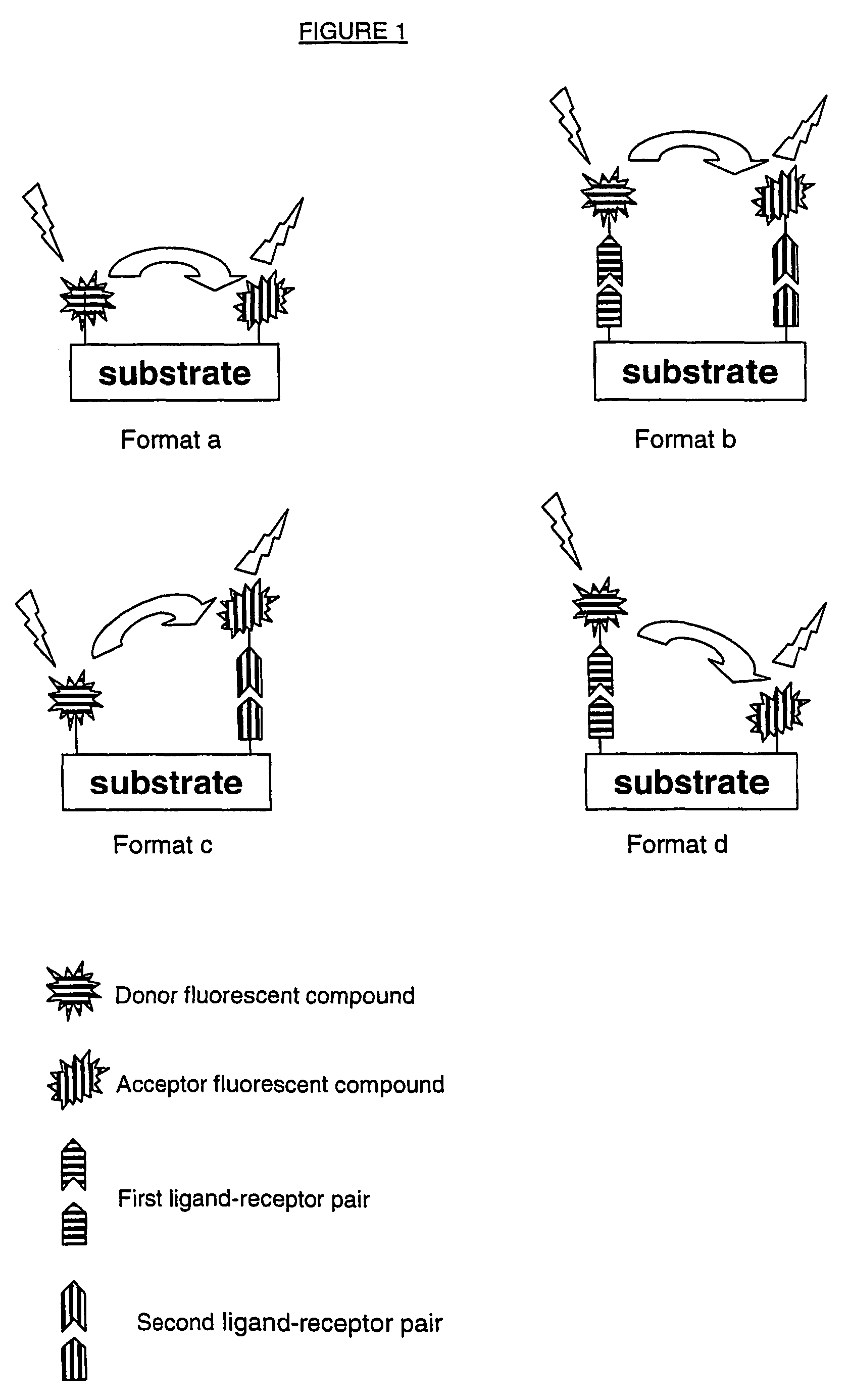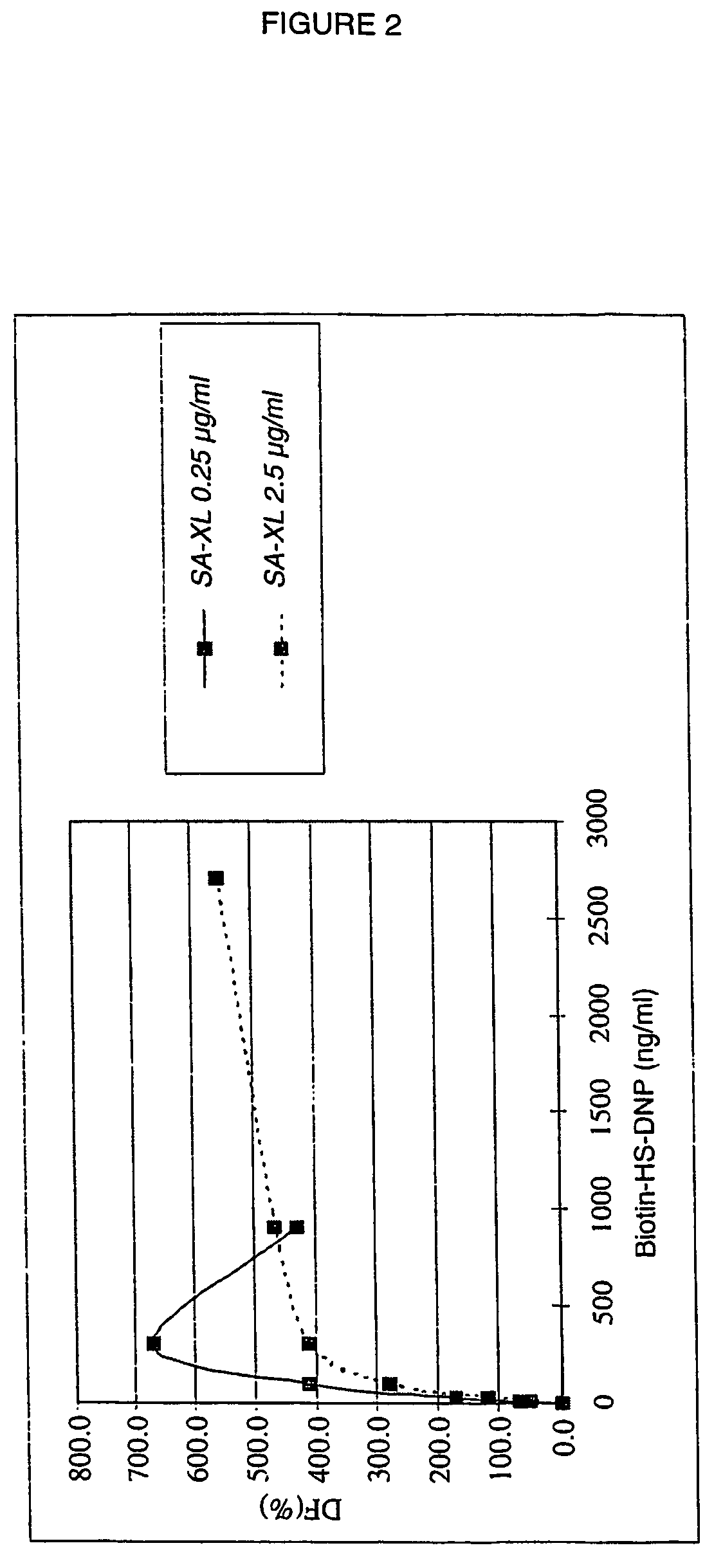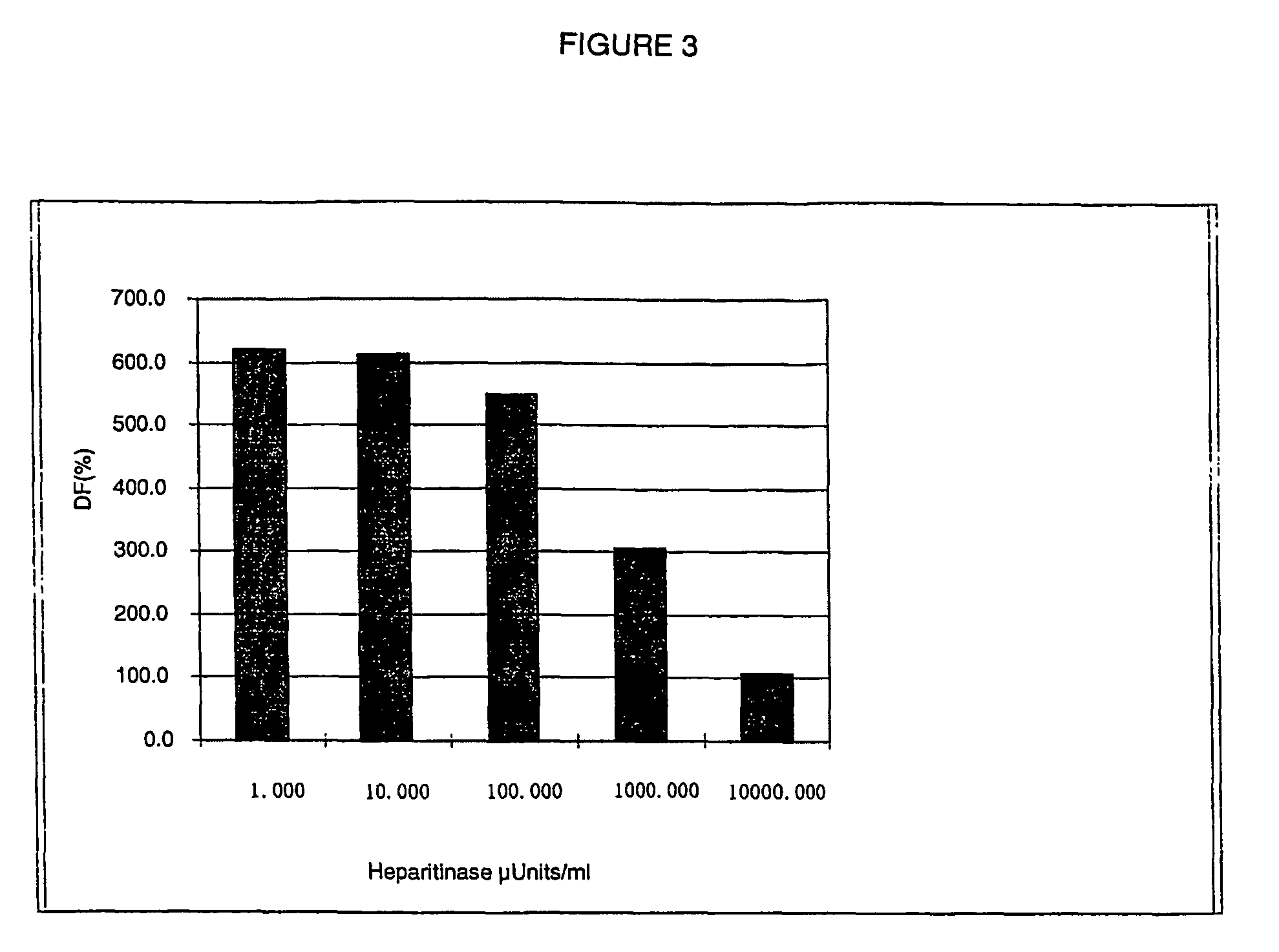Method for determining endoglycosidase enzyme activity
a technology of endoglycosidase and enzyme activity, which is applied in the field of determining the activity of endoglycosidase enzyme, can solve the problems of increasing the laboriousness and cost of the assay, not being suitable for high throughput screening, and affecting the efficiency of the assay
- Summary
- Abstract
- Description
- Claims
- Application Information
AI Technical Summary
Benefits of technology
Problems solved by technology
Method used
Image
Examples
example 1
Preparation of a DNP-HS-Biotin Substrate
[0115]Reagents Used:[0116]Solution of HS at 20 mg / ml: 10 mg HS+0.5 ml 10 mM PO4(Na / K) buffer, pH 7.0, 0.15M NaCl.[0117]Solution of EDC at 20 mM: 2.4 mg EDC (PIERCE)+0.625 ml 0.1 M MES buffer, pH 6.0.[0118]47 mM 5-(biotinamide)pentylamine solution: 4.2 mg 5-(biotinamide) pentylamine (PIERCE)+0.271 ml 0.1 M MES buffer, pH 6.0.[0119]Solution of DNP-NHS at 1 mg / ml: 3 mg DNP-NHS (CIS-Bio)+1.0 ml DMSO (Sigma D8418).
[0120]Biotin Labeling
[0121]0.25 ml of a solution of HS at 20 mg / ml (Seikagaku) are mixed with 0.125 ml of 47 mM 5-(biotinamide)pentylamine solution. The mixture is incubated for 18 h at room temperature in the presence of 0.125 ml of a 20 mM EDC solution. The reaction is then stopped by adding 1.5 ml of PO4(Na / K) buffer (10 mM) containing NaCl (0.15M), pH 7. The mixture is then dialyzed for 1.5 h, using a Slide-A-Lyzer dialysis system (Pierce), against 600 ml of 0.1M PO4(Na / K) buffer, pH 7. Two further dialyses carried out for 3 h in 600 ...
example 2
Determination of the Final Molar Ratios
[0124]Assaying of the DNP-HS-Biotin:
[0125]A kit for assaying HSs (Byscan, Biocolor Ltd) makes it possible to determine the concentration of DNP-HS-biotin.
[0126]Assaying of the DNP:
[0127]The DNP concentration is determined by measuring the absorbance of a solution of DNP-HS-biotin at 360 nm on a spectrophotometer; the DNP concentration is determined by comparing the measured value with a standard curve.
[0128]Assaying the Biotin:
[0129]The biotin concentration is measured using an assay based on the FRET phenomenon: a first curve is established by bringing into contact known concentrations of biotin, a cryptate-streptavidin donor conjugate and an XL-biotin acceptor conjugate, and measuring the signal obtained on a Rubystar fluorimeter (BMG). A displacement curve is plotted and will be used as a standard range.
[0130]The same experiment is carried out, replacing the biotin with the DNP-HS-biotin to be assayed. The value of the signal obtained is ref...
example 3
Assaying the DNP-HS-Biotin Compound Using a Homogeneous Time-Resolved Fluorescence (HTRF®) Measurement Method
[0132]The present example makes it possible to validate the use of the DNP-HS-biotin product in an assay based on the time-resolved measurement of fluorescence emitted by radiative transfer, in homogeneous medium.
[0133]Reagents Used:
[0134]Streptavidin-XL conjugate, solution at 10 μg / ml: 3.2 μl of SA-XL (CIS bio international) at 625 μg / ml+197 μl of 0.1M PO4(Na / K) buffer, pH7.0; 0.1% BSA 0.4M KF.
[0135]Streptavidin-XL conjugate, solution at 1 μg / ml: 18 μl of SA-XL (CIS bio international) at 20 g / ml+162 μl of 0.1M PO4(Na / K) buffer, pH7.0; 0.1% BSA 0.4M KF.
[0136]Anti-DNP antibody-cryptate conjugate (hereinafter referred to as aDNP-K), solution at 1 μg / ml: 4.5 μl of aDNP-K (CIS bio international) at 100 μg / ml+445 μl of 0.1M PO4(Na / K) buffer, pH 7.0, 0.1% BSA 0.4M KF.
[0137]DNP-HS-biotin solutions of varying concentration (from 22.2 to 5 400 ng / ml) are prepared from the solution obt...
PUM
| Property | Measurement | Unit |
|---|---|---|
| molar ratio | aaaaa | aaaaa |
| molar ratio | aaaaa | aaaaa |
| molar ratio | aaaaa | aaaaa |
Abstract
Description
Claims
Application Information
 Login to View More
Login to View More - R&D
- Intellectual Property
- Life Sciences
- Materials
- Tech Scout
- Unparalleled Data Quality
- Higher Quality Content
- 60% Fewer Hallucinations
Browse by: Latest US Patents, China's latest patents, Technical Efficacy Thesaurus, Application Domain, Technology Topic, Popular Technical Reports.
© 2025 PatSnap. All rights reserved.Legal|Privacy policy|Modern Slavery Act Transparency Statement|Sitemap|About US| Contact US: help@patsnap.com



